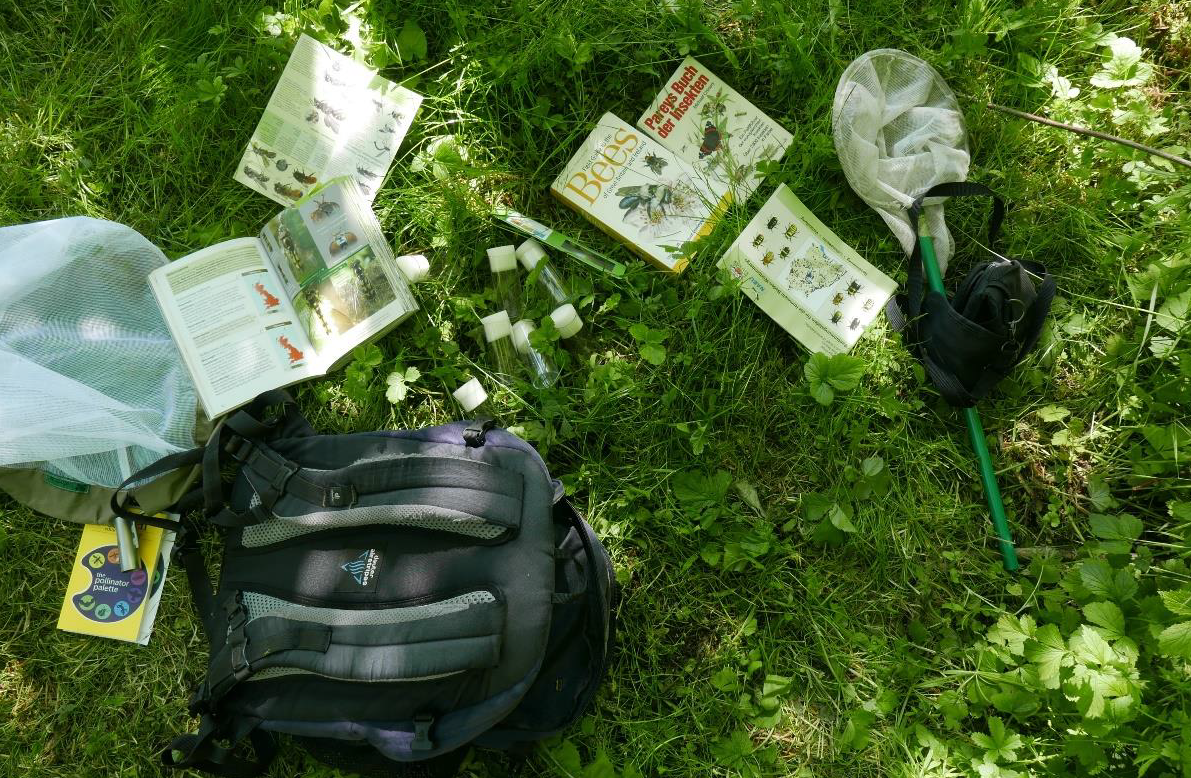Citizen science sandbox
Basic Info
Citizen science sandbox

It’s not just pollinator species that are threatened with extinctions. There are also fewer and fewer people capable of recognising different insect species. This is a serious issue for pollinator conservation, as monitoring species is an essential part of biodiversity conservation efforts. Given that citizens often play an important role in gathering information about pollinators - through so-called 'citizen science' - popularising taxonomic knowledge can be very beneficial. Moving beyond classroom learning, this activity takes citizens into pollinators’ natural habitats to introduce them to pollinators and their habitats, while providing hands-on instructions in the techniques for observation and monitoring, thus introducing a broad range of skills.
Stage: Noticing
Format: In person
Work Modality: Small groups
Location: Outdoor
Duration: 120mins
Topic(s): Pollinators
Preparations
Do a pre-excursion to confirm which pollinators and plants can be found in a given area. Also make sure that the place is quiet enough to allow for calm observation. For this kind of introduction, you might want to focus on butterflies, as they are more distinct, which makes them easier to identify then, e.g., hoverflies.Send participants detailed information on personal items they will need to bring: right clothes, water, sunscreen, hats, etc. - and bring extra yourself as some might come unprepared. Bring observation sheets or/and identify citizen science application (such as iNaturalist) that might be used. If you chose this option, you should provide introduction and guidance on using the digital tool, to ensure that it is accessible to everyone.
Tools
Tools: Insect nets and glasses, Camera
Other Tools: Insect identification atlases
Comments on Tools
Identification atlases should be as specific for the area as possible. You can ask a local environmental NGOs or conservation projects for suggestions - they might eve have ready made materials to share.Participants can use their own cameras or phones to take photos of plants and pollinators they find – but a macro lens might be helpful for close-ups. Such gadget can also be a nice token.
Team
Team: Scientific expert (e.g., entomologist)
Comments on Team
An entomologist should have experience in citizen science and be familiar with citizen science applications, if you decide to use these.
Process
This activity is best done in small groups, where the guide (an entomologist) will be able to dedicate time individually to each person. The process should closely follow a real insect monitoring method, e.g. a transect. Start with instructions to the whole group on how to use the tools, such as insect nets and glasses, allowing participants time to practice. Then set off on a path that will take you through different habitats, as a transect would, taking time to identify and discuss captured insects. Over time, you might encourage participants to be more independent.
Compatibility
This activity can follow targeted introductions of pollinator habitats or distinguishing features of different species. This way participants will already have some knowledge to build on and to test ‘in the wild’.On its own, this activity is mostly a training session. Useful and possibly needed, given how much knowledge it provides to participants. But citizens play a rather passive role. To introduce a participatory dimension, the activity should be blended or linked with activities that allow participants to contribute in more substantial ways. In the domain of research or nature conservation, this activity can be a prelude for a more co-creative activities that involve citizens in shaping research or monitoring programmes.